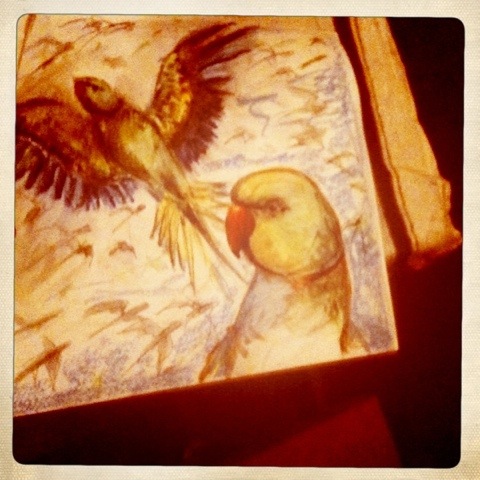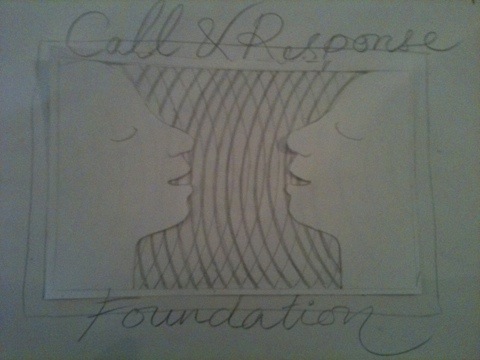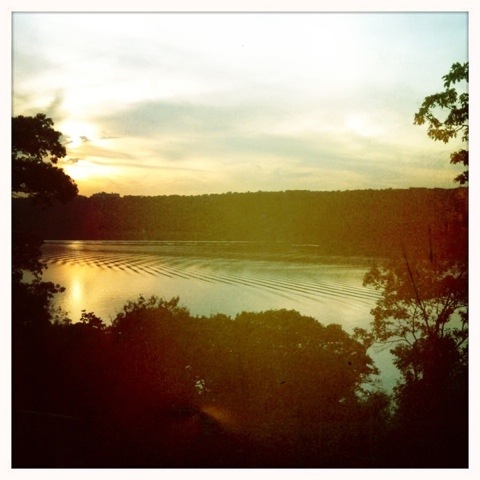In the style of Mertonian homage, a simple meditation on thoughts, ideas, and realizations from our discussion of "Thoughts in Solitude" by Thomas Merton at our recent meeting of the Bhakti Center Book ClubWe find a great, if unhealthy, solace in simply remaining in the role of the observer, yet the practical demands of this world, and the practical orders of the great teachers who carry us forward, demand that we transcend the restraints of the observer. They demand we come down from the clouds of our head-space into the ground of our heart-space.
In this ground of our heart, we come to understand the deeper truth of solitude, found in the acceptance, understanding, and communion with everyone else's solitude. We cannot accept how alone we are, how much pain we feel, how much joy we are capable of, and the presence of the Divine in our own heart until we can gradually see all these things in the heart of everyone else. The feeling of liberation we receive upon this revelation transcends all the fear and hesitation that ruins our ability to fully communicate with each other.
Having this revelation, we fully understand the meaning of solitude and silence in our own being, because the reality of who we are becomes incredibly clear, reflected with such illumination from the hearts of everyone else.
The pillars of greed, lust, envy, and all the other fantasies of the selfish heart has made our civilization barren practically to its core. Yet this is all a projection and reflection of the more imposing desert we face within our own heart, which is the source of all the anxiety we face in our individual and collective lives. This imposition from within has created the tangle of contradictions which we rage against, or which we die quietly but so painfully from.
The first instinct upon facing our contradictions is to run away as fast as we can, to dive into the spirits of our comforts. The experience of our actual consciousness is so painful, so nauseating, so disorienting, that most of us (myself especially) are still stuck in the energy of that initial instinct to flee, unable to go any further on the walk through the desert of the heart.
We are stuck once again on the observation deck, attempting to re-strategize for the next assault, but we are missing one great tool, one great weapon, which is found in the silence of our own heart. It is the space of our faith, where we understand that God is always carrying us and always protecting us, especially in the greatest tribulations and purification. In this space, feeling the warm embrace of our Beloved holding us close, we gain the proper perspective.
The great sage of solitude, Thomas Merton, explains this perspective:
"Contradictions have always existed in the soul of man. But it is only when we prefer analysis to silence that they become a constant and insolvable problem. We are not meant to resolve all contradictions, but to live with them and rise above them and see them in the light of exterior and objective values which make them trivial by comparison"
Thoughts in Solitude
The closest space in our heart, closer still even than the spaces of our stored bitterness, is this silent space where God lives with us, and where we can communicate with Him in prayer, meditation, study, and also properly and divinely guided action. In this space, the heart becomes big and the mind becomes clear. Love and truth begin to come together, for love is what the heart wants and truth is what the mind wants. We move closer to no longer being a victim to the pendulum swings between our contradictions.
Humility is the essential cloth we must wear to enter into this space of faith. Beginning with the fundamental level of our language, we must learn to speak to each other in a tone which renounces the aggressive and competitive spirit ingrained into our conditioning, turning instead towards a tone which offers a substance and meaning based on our common values of divinity.
This is a task which requires a great deal of attention and sacrifice, for our natural humility in all of its expressions is buried under the layers of our disconnection from each other, from God, and from ourselves. One of the reasons for this is that humility itself brings its own paradoxes into our consciousness. For example, humility is something we know that we need, and we desperately desire its presence, but when we know we have it in our grasp, it is that very recognition which causes us to lose it.
Humility is not necessarily we are meant to enjoy, yet there is a certain and sure pleasure which comes in the genuinely humble moment. It is when we turn the simple glory of that moment into an inauthentic construct of pride that we lose control of what has been given to us. To be vigilant in our humility actually means to be vigilant against the pride within us.
Another paradox of the humble cloth is that it is best represented in the most obvious action, rather than a passive tolerance or non-violence. By the most obvious action I mean, in the spiritual context, the most selfless and most needed action to be done, considering the time, place, and circumstance. This action remains clothed in humility when it does not reinforce our "hero construct", or the self-obsession of our prideful mind.
This action, even if done with force, with tough love, with power and confidence, can only help and never harm, because it is centered on the true balance between the mind and the heart, between Love and Truth.
If we can absorb these concepts through our intelligence into our heart, and if we pray for courage and guidance from our teachers and friends, our spiritual life truly opens into the solitary spaces of our inner life, into our space of faith, with the silence of our embrace with God against the raging of our mind/body and of our society's endless noise brigades.
We finally receive what we have always wanted, an embrace that will always stay with us and not be like the empty gestures which has left our heart crusted with grief. We will be alone, but united. Silent, but dancing to the ecstatic rhythms of the Lord's steps, and our struggle will be renewed and strengthened.
 Maddy's (Madhavi) first step on ISCOWP ground.
Maddy's (Madhavi) first step on ISCOWP ground.  Judy helping Madhavi settle in.
Judy helping Madhavi settle in. Dhananjaya performing artik to Madhavi to officiate her name changing and to honor those ISCOWP members who gave to save and maintain Madhavi.
Dhananjaya performing artik to Madhavi to officiate her name changing and to honor those ISCOWP members who gave to save and maintain Madhavi.




















